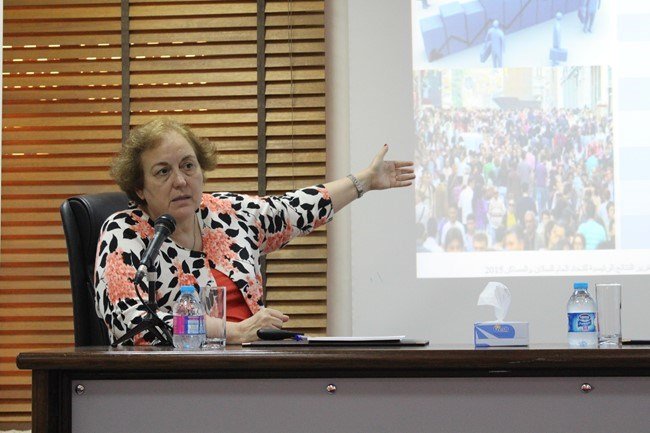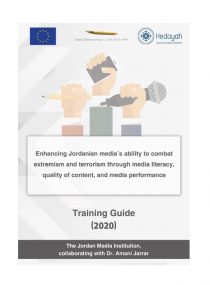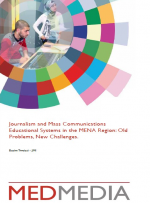Image:

19 Jul 2016
Dr. Sawsan Majali, secretary general of the Higher Population Council (HPC), said that the HPC looks forward to seeing the local media play a role in explaining the demographic reality imposed by Syrian refugees on Jordan and their great impact on realizing the demographic opportunity in light of the challenges facing Jordan.<br />
<br />
Speaking during a lecture at the Jordan Media Institute today, Monday, Majali called on the media to tackle the challenges resulting from the influx of migrants from different nationalities and Syrian refugees in their press coverage. These include providing their basic needs in light of the scarcity of resources, especially in the northern region (Irbid, Mafraq, Jerash, and Ajloun). This necessitates that media persons obtain accurate data and statistics from the competent authorities while raising various demographic issues.<br />
<br />
She pointed out that what makes the challenges facing Jordan more severe vis-à-vis migration and refugees is the weak coordination between the national entities concerned with migration, as well as the diversity of migration trends in Jordan, including internal, external, and transit. This is in addition to the various forms and patterns of migration, including economic migration, such as the migration of labor, and forced migration, such as refugee movements.<br />
<br />
Majali indicated that the lack of a regional framework, which allows for sharing the burdens of forced migration in connection with political conflicts, has negatively affected assistance to Jordan, the country that is most harmed and that has received the largest population influx in the Arab region, especially refugees.<br />
<br />
She noted that the lack of a national strategy for the optimal use of the positive returns of voluntary migration, and the weak awareness of the importance of integrating migration issues into national development plans, is an additional challenge in relation to migration.<br />
<br />
She explained that the crisis of Syrian refugees in particular has affected vital sectors in the Kingdom. According to the Jordanian response plan to the Syrian crisis, figures have shown that 70% of the Jordanian population and Syrian refugees use less than the national standard (100 liters of water per capita per day). The plan also showed that 62% of this problem is due to the Syrian crisis, besides the poor water supplies that had existed before the crisis of Syrian refugees and that exacerbated afterwards.<br />
<br />
Concerning the health sector, she pointed out that the results indicate shortage by 24% in the availability of hospital beds compared to the statistical size of the Jordanian and Syrian population. She noted that 91% of the reasons for this shortage are due to the influx of Syrian refugees.<br />
<br />
Majali indicated that the Jordanian economy has been adversely affected, in a visible manner, through the fact that the Jordanian trade deficit has increased sixfold since the outbreak of the crisis. Tourism has also suffered a sharp decline.<br />
<br />
She said that government spending has risen by 38% since 2010, while GDP growth has dropped by 56%. Also, the growth of per capita share of GDP has dropped by 64%, while public debt has increased by 53%. She added that the total domination of some economic sectors, particularly construction and agriculture, has reflected negatively on Jordanian laborers seeking to work in them.<br />



